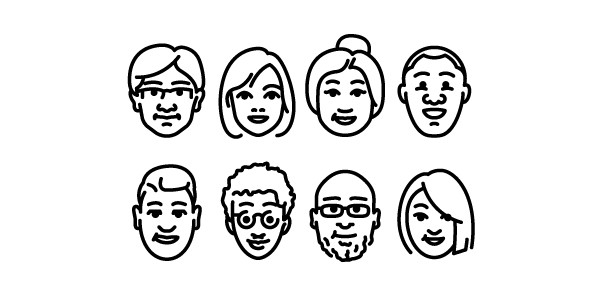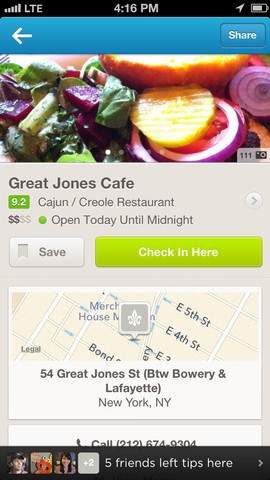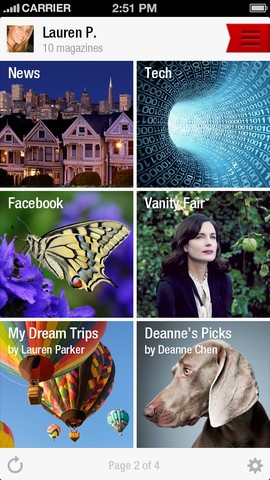Applications with social features have become the norm, but, as a designer, it's important that you question how these social features add value for the user. In this article, we'll explore how to improve an application by designing a meaningful social layer.

When we talk about social layers, there's a lot involved. Basically, we're building an interactive experience where people can create, share, and exchange information within a virtual network. The importance of user-generated content has grown enormously. Even a simple output of a social layer can create value for people, like Facebook's simple "Like" feature. On the flip side, social layers can have negative effects on our lives. They often create an unwanted (and unconscious) pressure to be successful not just in our work and our lives, but within the social media apps we're active using.
That being said, it's important to make sure that the social aspect we design and build is meaningful and fun. Even better, try to ignore the social layer if it isn't relevant to your application. The assumption that the social aspect is mandatory is wrong. When present, social interaction needs to be thoughtfully utilized.
A Subtle Difference
The social layer is more extensive than social media. Social media is intended to connect people with people, but a social layer is much more extensive. Social media became a social layer because it connected us with brands, experiences, products, feelings, applications, and games. When we try to connect to something or someone, it's a much larger part of our lives than it was just a few years ago. Social media has evolved into a social layer of life and our digital data online, and we spread it through our actions. It has become increasingly valuable for developers to use this layer in their applications.
Understanding the power of a social layer creates a range of possibilities for empowering your application. Social aspects are a cheap way to promote your application and they can improve the features of your application if they're relevant to what your application will do.
Qualities of a Good Social Layer

Generally, when we're talking about social layers we're talking about two important characteristics. They either help the user or help the community.
When we speak of helping the user, there are a lot of obvious solutions. We can offer them ways to express themselves by creating and sharing content. These features are just an example, but there are numerous options. Still, it's important to understand that you shouldn't force a social layer in your application if it doesn't create any value. Users might not want to share content or compare themselves to other users. Try to understand what the social aspect means for your target audience.
Another important part of the social layer is the sense of community it creates. These can be obvious things, like helping each other through content or building ways to interact with each other.
The interaction you create should be simple, fun, and worth the user's time. Try to analyze your own behavior on social media and see how it influences you. Use that as an example for the features you are planning in your application. Generally, people give value to their actions on social media. This is why it's important to add social features to your applications in a rewarding way.
Designing The Social Experience

Diversity by Andy Mangold on Dribbble
Start by defining your community and understanding what the added value of that community is.
When you're dealing with applications, everything starts with the features. Do you believe that a social layer enhances the experience of using your application? What are the advantages and disadvantages?
It's also necessary to understand how individuals participate in the community. What action or features are connected with the community? How much effort does such an action cost and what are the rewards? Specify what your social layer looks like. What are the important actions and how do they link to each other? Make a scheme for yourself.
Once you've figured out how you'd like to add a social layer to your application, think about the technical aspects. How will you handle user data? How will you create your features? How will you integrate every aspect of your social layer into a coherent application? It's often very difficult to make everything a streamlined experience, but it's important to keep that streamlined user experience in mind even if it costs features in the end.
Best Practices
This article has been purely theoretical thus far, so let's take a look at some applications and see how they made their social aspects a success.

One of my favorite examples is Foursquare. They've made the community the most important contributor in their application while also integrating the user's personal relationships. They also made all the user interactions within the social layer simple, fun, and accessible.
In addition, FourSquare also did a great job at rewarding the user's actions and keeping the application competitive between friends by resetting check-in points weekly. Most of all, it offers useful content and just about everyone can contribute to the experience. They understand how a social layer should work and the social aspect of their application has made it a huge success.

Flipboard isn't as popular as Foursquare, but they know how to make interaction with content fun. By creating simple navigation gestures and combining them with the ability to integrate social media accounts, Flipboard has made social media interaction much more fun. It's still possible to like, comment, or share and it's much less cluttered than most social media sites like Facebook.
The social layer they've created is hidden, and it's so well done that it doesn't even feel like a real social layer. Flipboard is like reading a newspaper that you can interact with. A hidden social layer can work just as well as an obvious one.
What are some of your personal favorite applications which handle the social aspects of applications very well?
Some Final Tips and Tricks
- Start on paper. Brainstorm, use feedback, and weigh out your pros and cons.
- Don't assume that every user wants to interact. Never force it.
- If you plan to work with accounts, make registering and logging in very simple and quick.
- Add a low-level form of interacting (a like button or checking in)
- Add a high-level form of interacting (commenting or leaving tips)
- Use a social layer to indirectly promote your application. Sharing is a great example of this.
- As a developer, make use of the social layer yourself to interact with your community.
- Do some usability tests. It's a great idea to use a beta version to find out how streamlined the interaction is.
- Finally, if a social layer doesn't create any added value for your application, just leave it out.
Conclusion
Social layers have grown and gained importance. As always, carefully weigh the pros and cons when deciding to use one within your application. Make interaction fun and rewarding, and users will gladly participate in the community you build. Good luck!


Comments